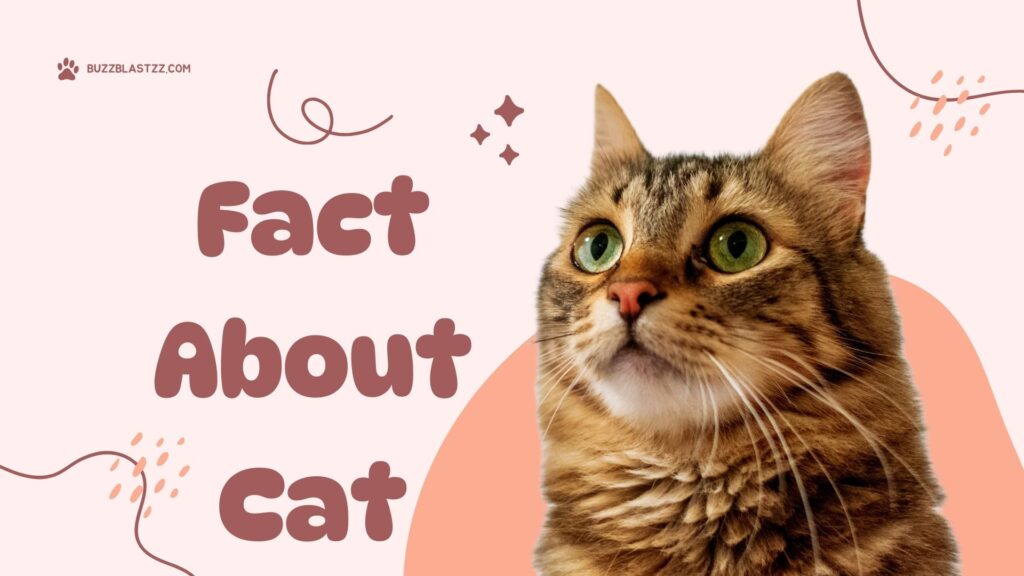Have you ever wondered how one of nature’s most efficient predators transformed into the beloved household pet millions of years later? This article explores the incredible history of cats, their fascinating evolution, their complex relationship with humans, and the modern challenges they face today. We’ll delve into the origins of these enigmatic creatures, discuss their roles in ancient civilizations, and examine how they’ve adapted to the changing world. Whether you’re a devoted cat lover or simply curious about the natural world, read on to discover the untold story of our feline friends.

The Origins of Cats: A Deep Dive into Cat History
Cats have roamed the Earth for millions of years, evolving from solitary hunters into the diverse range of species we see today. The earliest ancestors of modern cats emerged in the late Miocene epoch, over 10 million years ago. These wild creatures, with their agile bodies and sharp instincts, laid the groundwork for what would become one of nature’s most fascinating lineages.
Evolutionary Milestones and Early Wild Cats
Fossil records and genetic studies suggest that the common ancestors of today’s domestic cats share traits with large wild felines such as lions, tigers, and leopards. These early cats were equipped with powerful muscles, retractable claws, and acute senses, which allowed them to thrive as apex predators. Their physical adaptations, such as enhanced night vision and exceptional stealth, made them adept hunters in diverse environments—from dense forests to arid deserts.
Moreover, these evolutionary milestones enabled wild cats to carve out a niche in ecosystems where they played a critical role in controlling rodent populations. This balance was essential for maintaining the health of ancient agricultural systems and natural landscapes, highlighting their ecological importance from the very beginning.
The Domestication of Cats: How Wild Cats Became Our Beloved Pets
The Accidental Partnership: Cats and Early Human Settlements
Unlike many other domesticated animals that were bred and raised under human supervision, cats chose a more independent path. Around 10,000 years ago, as human civilization began to take root in the fertile regions of Mesopotamia, wild cats found an unexpected source of food: the abundance of rodents in grain storage facilities. This mutually beneficial relationship marked the beginning of a unique bond between humans and felines.
Rather than being forced into domestication, cats adapted to human settlements by providing a natural solution to the problem of pests. Over time, as humans recognized their value, these animals earned a place in households and communities. Their role as natural hunters not only protected food supplies but also led to a gradual cohabitation that would shape the destiny of both species.
Key Evolutionary Changes During Domestication
The domestication process led to subtle yet significant changes in the physiology and behavior of cats. While their fundamental hunting instincts remained intact, domestic cats began to exhibit traits that made them more suited to living alongside humans. These changes include a friendlier demeanor, a reduction in the instinct to roam vast territories, and physical adaptations that favored life in more confined spaces. Although domestic cats still retain 95.6% of their DNA in common with their wild counterparts, the differences in behavior and appearance serve as a testament to their remarkable adaptability.
Cats in Ancient Civilizations: Cultural Significance and Symbolism
Reverence and Worship in Ancient Egypt
Few animals have captured the human imagination as profoundly as the cat. Nowhere is this more evident than in ancient Egypt, where cats were revered and even deified. The Egyptians worshipped Bastet, a goddess depicted as a lioness or a woman with the head of a cat, symbolizing protection, fertility, and home. Cats were seen as embodiments of grace, agility, and the mysterious power of nature. Their presence in Egyptian art, sculpture, and mythology underscored their revered status, and harming a cat was considered a serious transgression.
A Shift in Perception: From Divine to Demonic
Despite their esteemed position in some cultures, cats also experienced periods of vilification. In medieval Europe, superstitions took hold, and cats—especially black ones—were often associated with witchcraft and dark magic. This negative perception led to widespread persecution and mass killings of cats, which, paradoxically, may have contributed to greater societal challenges. For example, the decline in cat populations during the Middle Ages has been linked to an increase in rodent-borne diseases, including the Black Plague. The interplay between reverence and fear illustrates the complex cultural narrative surrounding cats throughout history.
The Cat’s Role in Nature: Wild Cats and Ecosystem Balance
Natural Predators and the Art of Hunting
Even today, cats retain much of their ancestral prowess as hunters. Their physical and behavioral traits have been fine-tuned over millennia to suit a life of stealth and precision. Whether stalking small rodents or engaging in playful pounces, the cat’s ability to adapt its hunting style to various environments is a testament to its evolutionary success.
Wild cats, such as the African serval or the Eurasian lynx, continue to play a vital role in maintaining the balance of ecosystems. As apex predators, they help regulate the populations of other animals, preventing overpopulation and ensuring the stability of their natural habitats. Their survival instincts, including keen senses and powerful reflexes, remain a source of fascination and study for scientists and naturalists alike.
Ecological Impact: More Than Just a Pet
The significance of cats extends beyond their role as household companions. In many parts of the world, wild cat species are keystone predators, influencing the structure and diversity of their ecosystems. By controlling the population of prey species, these predators indirectly support the growth of vegetation and maintain the balance within the food chain. This ecological role is critical for sustaining biodiversity and ensuring the health of natural environments.
Modern Challenges Facing Cats: Urbanization, Habitat Loss, and Beyond
Stray and Feral Cats in the Urban Jungle
While domestic cats enjoy the comforts of home, many others struggle to survive as stray or feral populations in urban areas. These cats often face challenges such as food scarcity, disease, and human conflict. The rapid expansion of cities has resulted in the fragmentation of natural habitats, forcing wild and feral cats into environments that are far removed from their natural ecosystems.
In urban settings, the competition for resources can be fierce. Feral cats often band together in colonies, creating complex social structures that mirror, in some ways, the wild prides of their larger cousins. Despite their resilience, these populations are vulnerable to environmental hazards, including pollution, extreme weather, and human neglect.
Human Impact: Overbreeding, Declawing, and Environmental Disruptions
The modern relationship between humans and cats is not without its drawbacks. Practices such as overbreeding and declawing have sparked significant debate among animal rights advocates and veterinarians. Declawing, in particular, has been criticized for its impact on a cat’s natural behavior and overall quality of life. These procedures can lead to chronic pain, behavioral issues, and even long-term physical disabilities.
Furthermore, as urbanization continues to expand, the destruction of natural habitats not only endangers wild cat species but also disrupts the delicate balance of ecosystems. Habitat loss, combined with the introduction of invasive species and environmental pollution, presents an ongoing threat to both wild and domestic cats alike.
Conservation Efforts: Protecting Our Feline Friends
In response to these challenges, numerous conservation organizations and wildlife groups are working tirelessly to protect wild cat populations and ensure the humane treatment of stray and feral cats. Initiatives include habitat restoration projects, spay and neuter programs, and public awareness campaigns aimed at promoting responsible pet ownership. These efforts are critical in preserving the biodiversity of our planet and ensuring that future generations can appreciate the beauty and complexity of these extraordinary animals.
Unique Perspectives on Cats: Social, Environmental, and Ecological Impacts
Social Impact: Cats and Human Society
Cats have a unique way of influencing human behavior and culture. Their independent yet affectionate nature has inspired countless works of art, literature, and even internet memes. From the mysterious allure of the black cat to the playful antics of domestic felines, these animals have become symbols of both elegance and mischief. Their presence in our homes and online spaces provides comfort and joy, highlighting the profound impact they have on our social fabric.
Environmental Impact: The Role of Cats in Biodiversity Conservation
Beyond their cultural significance, cats play a pivotal role in environmental conservation. The decline of wild cat populations serves as an important indicator of broader ecological issues. By studying these animals and their habitats, scientists can gain valuable insights into the health of entire ecosystems. Conservation efforts focused on protecting wild cats often have a cascading effect, benefiting a wide range of species and contributing to overall biodiversity.
The Food Chain Connection: What Happens When a Species Disappears?
The disappearance of any species, including cats, can have far-reaching consequences for ecosystems. As predators, cats help control the populations of other animals, and their absence could lead to overpopulation of certain species, disrupting the natural balance. This phenomenon, known as trophic cascade, underscores the importance of every species in maintaining the intricate web of life. By protecting cats, we are also safeguarding the health of our ecosystems and ensuring that nature continues to thrive.
A Look to the Future: How Can We Help Our Feline Friends?
What Can Individuals Do to Make a Difference?
Every person has the power to contribute to the well-being of cats, both domestically and in the wild. Simple actions can make a significant difference:
- Adopt, Don’t Shop: Consider adopting stray or rescue cats rather than purchasing from breeders.
- Spay and Neuter: Support local spay/neuter programs to prevent overpopulation.
- Keep Cats Indoors: If you have a pet, keeping them indoors or in a controlled outdoor environment can protect wildlife and reduce risks to your cat.
- Support Conservation Organizations: Donate or volunteer with groups dedicated to wildlife conservation and habitat restoration.
Community and Global Initiatives for Cat Conservation
On a larger scale, communities and governments can implement policies to protect natural habitats and regulate practices that harm wildlife. By investing in urban planning that considers ecological needs, supporting scientific research, and enforcing animal welfare laws, we can create a safer world for both domestic and wild cats. These initiatives not only protect cats but also promote biodiversity and environmental sustainability, ensuring that future generations inherit a balanced and thriving natural world.
Read Also :- Canada Pension Plan (CPP): Everything You Need to Know
Frequently Asked Questions (FAQs) about Cats
1. What are the origins of domestic cats?
Domestic cats trace their lineage back to wildcats from the Near East, particularly in regions like ancient Mesopotamia. They were attracted to early human settlements because of the abundant food supply provided by rodents.
2. How did cats become domesticated?
Unlike other animals, cats domesticated themselves by gradually adapting to human environments. Their role as natural pest controllers helped establish a mutually beneficial relationship with humans, which eventually led to domestication.
3. Why were cats worshipped in ancient Egypt?
In ancient Egypt, cats were revered for their hunting abilities and were associated with the goddess Bastet. They symbolized protection, fertility, and home, and harming a cat was considered a grave offense.
4. What challenges do stray and feral cats face in modern urban environments?
Stray and feral cats often struggle with food scarcity, disease, and human-related conflicts in urban areas. Urbanization has led to habitat loss and environmental pollution, further complicating their survival.
5. What can I do to help protect cats and their natural habitats?
You can support local animal shelters, promote spay/neuter programs, keep your pet cats indoors or in safe environments, and contribute to conservation efforts that protect natural habitats. Every small step counts toward creating a better future for these incredible animals.
6. How do wild cats contribute to ecosystem balance?
Wild cats serve as apex predators that help regulate the populations of smaller animals. This control maintains a balance in the ecosystem, preventing overpopulation of certain species and supporting overall biodiversity.
Conclusion: Embracing Our Feline Legacy
The journey of cats—from fierce wild hunters to cherished household companions—illustrates their incredible adaptability and enduring importance in both nature and human society. Their evolution, cultural significance, and ecological role serve as a reminder of how interconnected we are with the natural world. In a time when both wild and domestic cats face modern challenges, it is more important than ever to appreciate their legacy and work together to secure their future.
Our relationship with cats is a testament to the beauty of nature’s complexity and the profound impact that even the smallest creature can have on our lives. By understanding their history, respecting their role in the environment, and taking action to protect them, we honor the remarkable journey of these fascinating animals.
Remember, every time you see a cat lounging in a sunbeam or hunting a stray mouse, you’re witnessing a living piece of an evolutionary masterpiece. The future of these majestic creatures is in our hands—what will you do to help preserve their legacy for generations to come?
- This article aims to offer a comprehensive look into the history, evolution, and modern challenges of cats, enriched with key insights and practical advice. Whether you’re a cat enthusiast or an advocate for wildlife conservation, the story of cats serves as an inspiring reminder of the intricate bonds between nature and humanity.
Keywords: Cat History, Domestic Cats, Wild Cats, Cat Domestication, Feral Cats, Cat Conservation, Animal Documentaries, Feline Evolution, Urban Wildlife, Ancient Egyptian Cats



